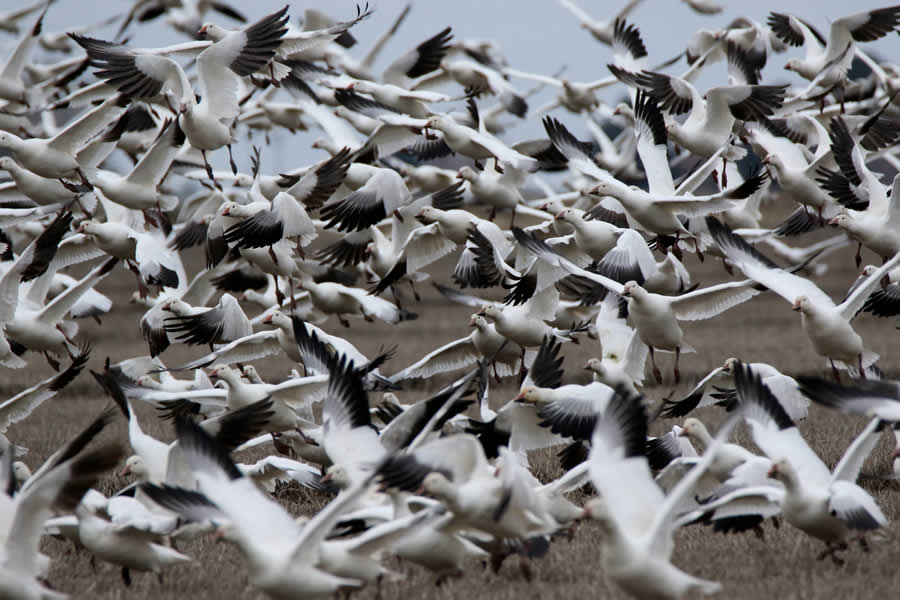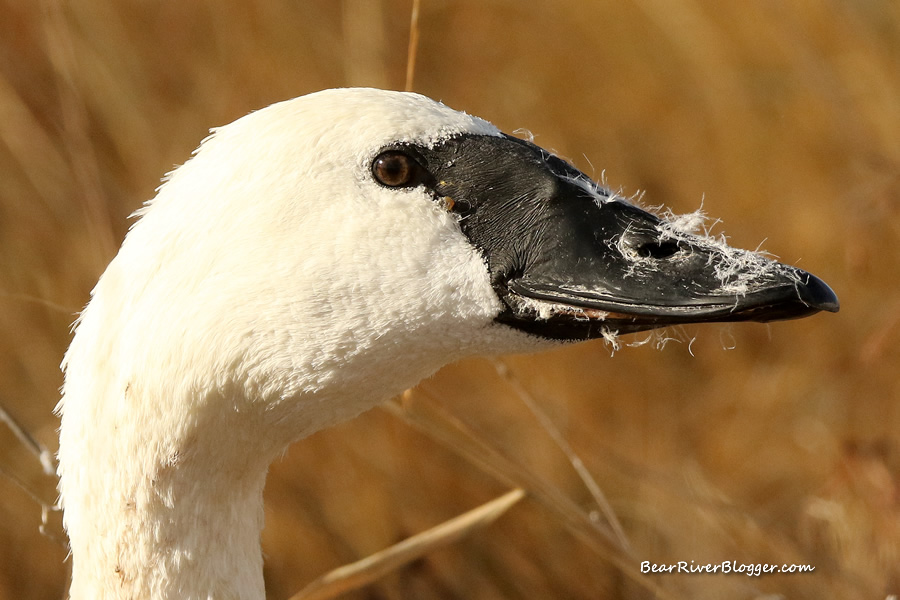This will be a short blog post to update those of you interested in seeing the thousands of snow geese that migrate through northern Utah, particularly in the small farming community of Corinne.
Each year, starting in early February, thousands of snow geese migrate through Utah and stopover in the rural farming town of Corinne, just a mile or so north of the Bear River Migratory Bird Refuge.
For some reason, the snow geese don’t actually use the refuge at all, but rather sit during the day on a private wetland which is on the northeast border of the refuge.

Although not visible from their roost during the day, the snow geese leave the shallow marsh to fly out to the farm fields of Corinne and surrounding areas to feed on waste grain leftover from last season.
This happens in both morning and evening, giving the avid bird watcher or photographer a couple opportunities each day to observe them as they feed. Sometimes the geese congregate in very large flocks, oftentimes consisting of several thousand birds or more.
Early to mid-March is the best time to view the migrating snow geese, as in a couple weeks or so they will head north to their next resting point, somewhere in Idaho from what I have been told.

Finding the snow geese can be a bit tricky somedays, but the easiest way to locate them is to get out near the farm fields before they take flight and follow them to whichever field they decide to feed in during the day.
It is quite common for them to change fields daily, so predicting which field they will be feeding in at any given time is impossible, but it isn’t hard to follow them out to feed if you get there before they take flight.
The best place to start to watch for them is 6800 west in Corinne. Starting at 2400 north, drive south for about a half-mile to a mile and watch to the west. This is where the private wetland is located, about a couple miles to the west of the road, but you can see them take flight very easily from this location.
I have seen them as early as the very first light of day and usually see them about one to two hours before sunset.
Subscribe to our blog
We appreciate your readership and suggest if you like this blog to head over to our subscription page and sign up for email notifications for future blog posts.



